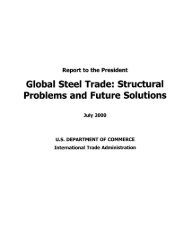Vietnam Environmental Technologies Export Market Plan
Vietnam Environmental Technologies Export Market Plan
Vietnam Environmental Technologies Export Market Plan
Create successful ePaper yourself
Turn your PDF publications into a flip-book with our unique Google optimized e-Paper software.
Hanoi<br />
The largest water supplier in the city, the Hanoi Water<br />
Company has eight water stations and other smaller<br />
plants. The company says it is able to supply between<br />
340,000 to 350,000 m 3 of clean water per day. The<br />
company’s system is supplied by over 125 artesian wells,<br />
some of which have less than 50 percent of their designed<br />
capacity left.<br />
Capacity will increase when construction of two new<br />
water treatment plants is completed. The plants are part<br />
of the World Bank’s $97.8 million First Water Supply<br />
project, which is upgrading water resources in four key<br />
northern regions: Hanoi, Haiphong, Quang Ninh, and<br />
Danang. In addition to the World Bank loans, the Finnish<br />
government is providing $1.96 million in co-financing<br />
for technical assistance and consultant contracts.<br />
In early 1999, the World Bank awarded a $33 million<br />
construction contract for the Hanoi component to a joint<br />
venture between Korea’s Kolon Corporation (51 percent)<br />
and the <strong>Vietnam</strong> Construction and Import/<strong>Export</strong><br />
Corporation (49 percent). The World Bank is providing<br />
85 percent of the financing for the construction contract.<br />
The joint venture is building two 30,000 m 3 per day<br />
water-supply stations. One plant is being built in Tu Liem<br />
district and the other in Tay Ho district. Four new wells<br />
will be drilled to supply water to the plants. The additional<br />
60,000 m 3 per day will bring total capacity to 410,000<br />
m 3 per day.<br />
By 2010, authorities in Hanoi plan to install water<br />
treatment systems in Ba Dinh, Hai Ba Trung, Hoan Kiem,<br />
Dong Da, Tay Ho, Thanh Tri, and Tu Liem districts.<br />
A U.S. firm, M-Power Corp., is developing plans to<br />
build a $134 million build operate transfer (BOT) water<br />
supply network in Hanoi. The project is in the feasibility<br />
study phase and no BOT contract has been signed. The<br />
project calls for construction of a water purification plant<br />
with a capacity of 500,000 m 3 of clean water per day and<br />
rehabilitation of 56 kilometers of water drainage systems.<br />
The project aims to include construction of reservoirs and<br />
installation of water supply systems in Hanoi’s suburbs,<br />
as well as steps to reduce water loss throughout Hanoi’s<br />
distribution system.<br />
Haiphong<br />
Construction has been completed on the Haiphong<br />
component of the World Bank’s First Water Supply<br />
project. The project is rehabilitating the main water<br />
supply plant for Haiphong, the An Duong Water <strong>Plan</strong>t.<br />
Capacity of the plant is being increased from 60,000 m 3<br />
per day to 100,000 m 3 per day. The project also involves<br />
rehabilitation of the distribution system, water intake, and<br />
pumping stations and will increase household connections<br />
to the water network. The project is scheduled to be<br />
complete by 2002.<br />
The World Bank has signed a credit for $24.4 million<br />
to finance these upgrades. The Chinese Metallurgy and<br />
Construction Corporation will supply and install<br />
equipment worth $19.3 million over the next three and a<br />
half years.<br />
Quang Ninh<br />
After a three-month delay, construction has started on<br />
the Quang Ninh component of the First Water Supply<br />
project. French contractor SAUR International won the<br />
main civil works contract, valued at approximately $19<br />
million.<br />
By mid-2000, SAUR had started purchasing materials<br />
and equipment and had started construction of raw water<br />
lines. SAUR was also preparing the detailed design for<br />
rehabilitation of two water supply plants in Quang Ninh.<br />
When completed, the Dong Ho Water <strong>Plan</strong>t will have<br />
a capacity of 20,000 m 3 per day, and the Dien Vong plant<br />
will have a capacity of 60,000 m 3 per day.<br />
Danang<br />
Danang is the fourth component of the First Water<br />
Supply project and has been the slowest in getting<br />
underway. Prequalification for bidding on the project has<br />
been completed, and bid documents for the civil works<br />
contract and construction supervision contracts were<br />
submitted on January 5, 2000. Five contractors have<br />
submitted bids. The consultant evaluating the bids,<br />
GHDK Co., is a joint venture between GHD of Australia<br />
and Kim Hien Co., a <strong>Vietnam</strong>ese firm with offices in<br />
Hanoi and Danang.<br />
4.3—Rural Water Supply<br />
In mid-1999, the government completed a master plan<br />
for rural water supply. The study was conducted by the<br />
Ministry of Construction, the Ministry of Agriculture and<br />
Rural Development (MARD), and Danish International<br />
Development Assistance (DANIDA). DANIDA provided<br />
a $2 million grant to complete the study.<br />
The plan focuses on supplying clean water to rural<br />
households, building household sanitary facilities, and<br />
preventing diseases caused by polluted surface waters by<br />
the year 2020. The government and National Assembly<br />
<strong>Vietnam</strong> <strong>Export</strong> <strong>Market</strong> <strong>Plan</strong><br />
15
















